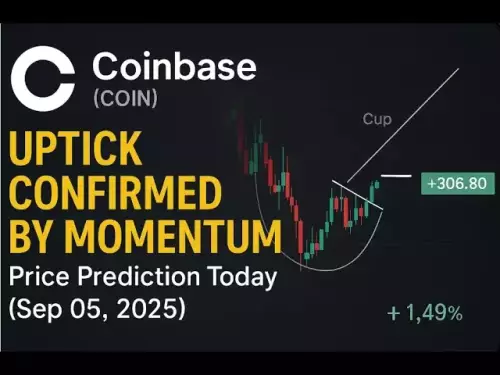-
 Bitcoin
Bitcoin $111400
1.19% -
 Ethereum
Ethereum $4330
1.06% -
 XRP
XRP $2.851
1.74% -
 Tether USDt
Tether USDt $1.000
0.00% -
 BNB
BNB $851.3
0.83% -
 Solana
Solana $205.5
0.99% -
 USDC
USDC $0.0000
0.00% -
 Dogecoin
Dogecoin $0.2167
2.37% -
 TRON
TRON $0.3325
-0.67% -
 Cardano
Cardano $0.8354
3.62% -
 Hyperliquid
Hyperliquid $46.90
5.09% -
 Chainlink
Chainlink $22.43
0.60% -
 Ethena USDe
Ethena USDe $1.001
-0.01% -
 Bitcoin Cash
Bitcoin Cash $613.8
4.60% -
 Sui
Sui $3.400
4.37% -
 Stellar
Stellar $0.3603
2.19% -
 Avalanche
Avalanche $24.45
0.44% -
 Hedera
Hedera $0.2203
3.90% -
 Cronos
Cronos $0.2672
0.45% -
 UNUS SED LEO
UNUS SED LEO $9.533
0.10% -
 Litecoin
Litecoin $113.1
2.80% -
 Toncoin
Toncoin $3.104
0.11% -
 Shiba Inu
Shiba Inu $0.00001246
3.18% -
 Polkadot
Polkadot $3.827
2.06% -
 Uniswap
Uniswap $9.436
2.42% -
 Dai
Dai $0.0000
0.01% -
 Monero
Monero $266.1
-0.66% -
 Ethena
Ethena $0.6788
4.52% -
 Aave
Aave $305.0
-0.98% -
 World Liberty Financial
World Liberty Financial $0.1830
-2.70%
What are NFTs with utility?
Utility NFTs offer tangible benefits like access, income, and governance, transforming digital ownership into functional assets within thriving ecosystems.
Sep 04, 2025 at 01:18 am
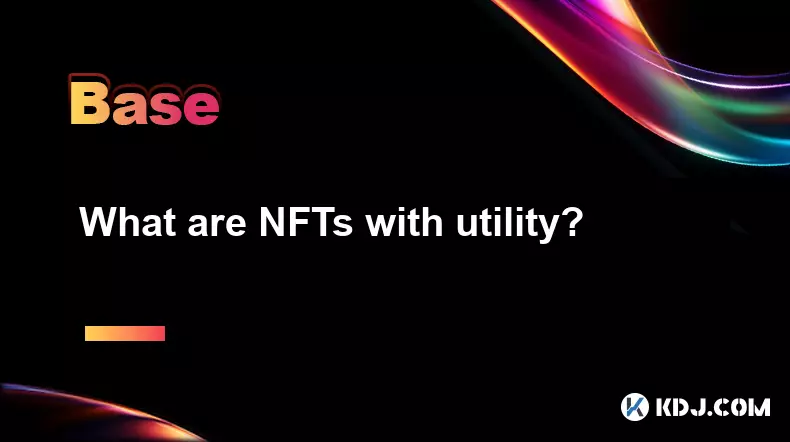
Understanding Utility in NFTs
1. NFTs with utility go beyond mere digital ownership by offering tangible benefits to their holders. These benefits can range from access to exclusive content, participation in governance, or real-world privileges. Unlike purely collectible NFTs, utility-driven tokens serve a functional role within a specific ecosystem.
2. A key characteristic of utility NFTs is their integration into platforms or communities. For example, owning a particular NFT might grant voting rights in a decentralized autonomous organization (DAO), allowing holders to influence project decisions. This transforms the NFT from a static asset into an active tool for engagement.
3. Some utility NFTs unlock premium features in digital applications. Gamers might use NFTs as in-game items that provide special abilities or access to restricted levels. These items are not only tradable but also enhance the user experience, creating sustained demand.
4. Brands and creators are leveraging utility NFTs to deepen customer relationships. By offering perks such as early access to product drops, VIP event invitations, or loyalty rewards, companies turn NFTs into membership cards within their digital ecosystems.
5. The value of utility NFTs often correlates with the strength and activity of the community behind them. As long as the platform continues to deliver meaningful benefits, the NFT retains relevance and potential for appreciation.
Examples of Utility-Driven NFT Projects
1. The Bored Ape Yacht Club (BAYC) is one of the most recognized examples. Holding a Bored Ape NFT grants access to exclusive events, merchandise, and collaborative projects like the ApeCoin ecosystem. This transforms the NFT into a gateway for social and financial opportunities.
2. Decentraland uses NFTs to represent parcels of virtual land. Owners can develop these spaces, host events, or rent them out, turning digital real estate into income-generating assets. The utility lies in the autonomy and economic potential provided by ownership.
3. Music artists are issuing NFTs that include royalties, backstage passes, or co-creation rights. These tokens allow fans to participate in the artist’s journey while earning passive income from future sales.
4. Some blockchain games issue NFTs that function as playable characters or equipment. These items can be upgraded, combined, or sold, creating a dynamic in-game economy driven by player ownership.
5. Platforms like Friends With Benefits (FWB) use NFTs as membership tokens. Owning the NFT grants entry into a curated community of creators, developers, and thinkers, where collaboration and knowledge sharing are central.
How Utility Enhances NFT Value
1. Utility directly impacts an NFT’s long-term viability. When a token provides ongoing benefits, it reduces the risk of becoming obsolete or purely speculative. This functional aspect can stabilize demand even during market downturns.
2. Projects that regularly update the utility of their NFTs—such as adding new features or partnerships—tend to maintain higher engagement levels. Continuous innovation keeps the community invested and the ecosystem evolving.
3. Utility fosters network effects. As more users join to access benefits, the value of the entire system increases. This creates a feedback loop where adoption fuels further development and utility expansion.
4. Transparent roadmaps that outline future utility upgrades help build trust. Investors are more likely to support projects that demonstrate a clear plan for delivering real-world value through their NFTs.
5. Utility NFTs often outperform purely aesthetic ones in terms of retention rates. Users are less likely to sell if they actively use the NFT for access, income, or participation.
Frequently Asked Questions
What makes a utility NFT different from a regular NFT?
A utility NFT provides functional benefits such as access, privileges, or income generation, whereas a regular NFT typically serves as a collectible or proof of ownership without additional features.
Can utility NFTs generate passive income?
Yes, some utility NFTs earn royalties from secondary sales, stake rewards, or rental income, especially in gaming or metaverse platforms where assets are leased or used by others.
Are utility NFTs more secure than speculative ones?
While no NFT is immune to market volatility, utility NFTs often have stronger fundamentals due to their embedded functions, making them less reliant on hype alone.
How do I verify the utility of an NFT before purchasing?
Review the project’s whitepaper, community engagement, roadmap, and existing partnerships. Active development and real-world use cases are strong indicators of genuine utility.
Disclaimer:info@kdj.com
The information provided is not trading advice. kdj.com does not assume any responsibility for any investments made based on the information provided in this article. Cryptocurrencies are highly volatile and it is highly recommended that you invest with caution after thorough research!
If you believe that the content used on this website infringes your copyright, please contact us immediately (info@kdj.com) and we will delete it promptly.
- Solana's Tug-of-War: Bulls vs. Sellers – Who's Winning?
- 2025-09-06 02:45:16
- Crypto Tokens, SEC Regulation, and Market Explosion: Navigating the Web3 Revolution
- 2025-09-06 02:45:16
- Crypto Coins in 2025: Spotting the Next Big Investment
- 2025-09-06 03:05:15
- Altcoins: Profit Potential or High-Risk Gamble?
- 2025-09-06 03:05:15
- Ethereum Price, PEPE Coin, and Layer 2s: What's the Hype?
- 2025-09-06 03:16:35
- Web3 Ghostwriter Fly You Fools Soars: From Berlin Hackathon to Entrepreneur Awards
- 2025-09-06 02:30:13
Related knowledge
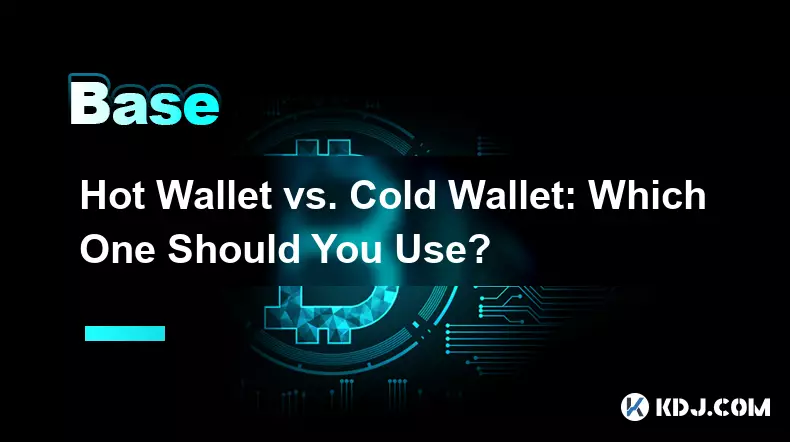
Hot Wallet vs. Cold Wallet: Which One Should You Use?
Sep 05,2025 at 06:19pm
Understanding Hot Wallets in the Cryptocurrency Ecosystem1. A hot wallet is a digital cryptocurrency wallet that remains connected to the internet at ...

What is "backtesting" a crypto trading strategy?
Sep 03,2025 at 10:55am
Understanding Backtesting in Crypto TradingBacktesting is the process of evaluating a trading strategy by applying it to historical market data. Trade...

What is a "crypto trading bot" and do they work?
Sep 02,2025 at 04:19pm
Understanding Crypto Trading Bots1. A crypto trading bot is a software application designed to automate the process of buying and selling cryptocurren...

What is a "copy trading" platform?
Sep 02,2025 at 07:00pm
Understanding Copy Trading in the Cryptocurrency Space1. A copy trading platform allows users to automatically replicate the trades of experienced inv...
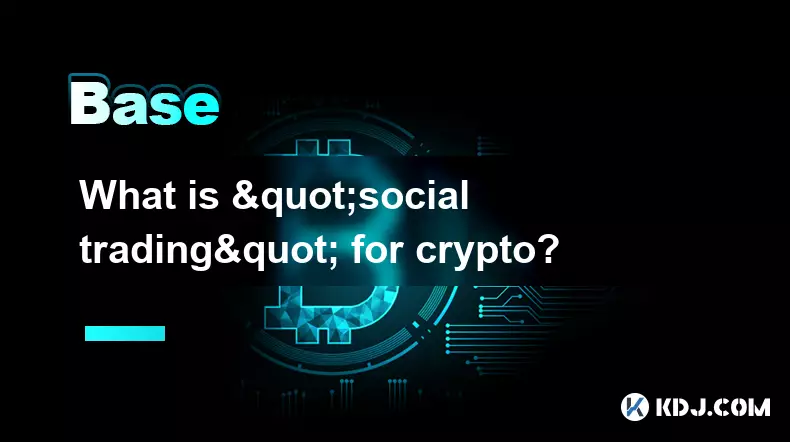
What is "social trading" for crypto?
Sep 03,2025 at 09:00pm
Understanding Social Trading in the Cryptocurrency Space1. Social trading refers to a method where investors observe, follow, and automatically replic...
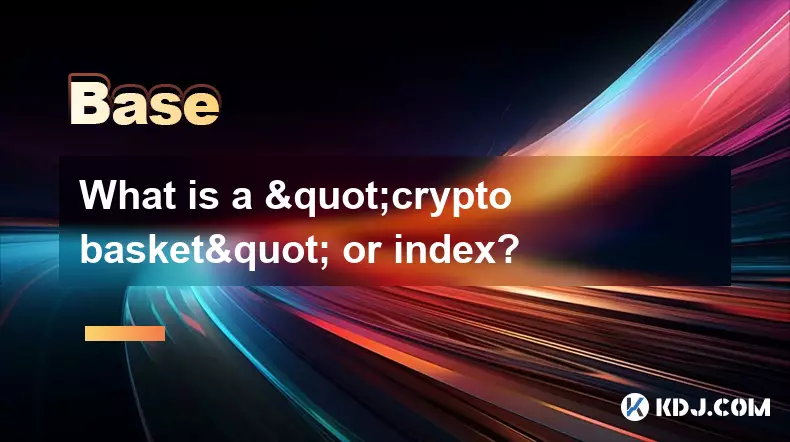
What is a "crypto basket" or index?
Sep 03,2025 at 07:01am
Understanding Crypto Baskets and Their Role in Digital Asset Investment1. A crypto basket refers to a curated collection of multiple cryptocurrencies ...

Hot Wallet vs. Cold Wallet: Which One Should You Use?
Sep 05,2025 at 06:19pm
Understanding Hot Wallets in the Cryptocurrency Ecosystem1. A hot wallet is a digital cryptocurrency wallet that remains connected to the internet at ...

What is "backtesting" a crypto trading strategy?
Sep 03,2025 at 10:55am
Understanding Backtesting in Crypto TradingBacktesting is the process of evaluating a trading strategy by applying it to historical market data. Trade...

What is a "crypto trading bot" and do they work?
Sep 02,2025 at 04:19pm
Understanding Crypto Trading Bots1. A crypto trading bot is a software application designed to automate the process of buying and selling cryptocurren...

What is a "copy trading" platform?
Sep 02,2025 at 07:00pm
Understanding Copy Trading in the Cryptocurrency Space1. A copy trading platform allows users to automatically replicate the trades of experienced inv...

What is "social trading" for crypto?
Sep 03,2025 at 09:00pm
Understanding Social Trading in the Cryptocurrency Space1. Social trading refers to a method where investors observe, follow, and automatically replic...

What is a "crypto basket" or index?
Sep 03,2025 at 07:01am
Understanding Crypto Baskets and Their Role in Digital Asset Investment1. A crypto basket refers to a curated collection of multiple cryptocurrencies ...
See all articles

























